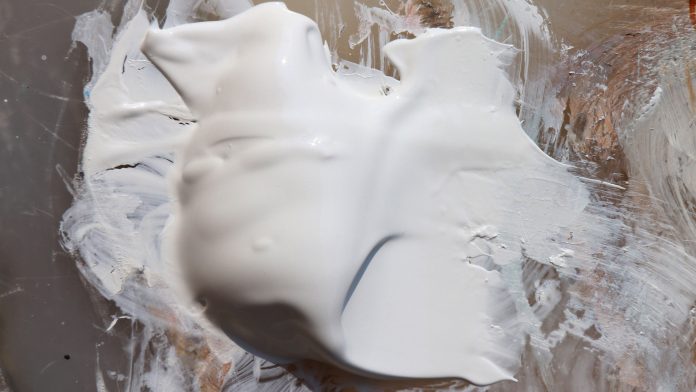A new process developed by Karlsruhe Institute of Technology (KIT), has resulted in the creation of an extremely thin polymer foil that efficiently scatters photons, offering a sustainable alternative to other white pigments.
KIT’s new inexpensive material can be applied industrially to give products an intense white appearance. Until now, titanium dioxide has been the standard pigment used for white colouring in lacquers, paints, and plastics as well as cosmetics, foods and even chewing gum.
However, the use of the pigment has received some criticism. “Titanium dioxide has a very high refractive index; it reflects incident light almost completely. But it is associated with the drawback that its particles do not degrade and thus pollute the environment in the long term,” says Professor Hendrik Hölscher of KIT’s Institute of Microstructure Technology (IMT).
There has been great concerns that titanium dioxide could be harmful to human health. When inhaled, titanium dioxide can have a carcinogenic effect on the body.
“We avoid the use of pigments that are harmful to health and the environment by producing porous polymer structures of comparably high scattering efficiency,” Hölscher says.
Modelled on nature
Hölscher and his team were inspired by the white beetle Cyphochilus insulanus, whose chitin scales appear white due to their nanostructure. “Based on this model, we produce polymer-based solid, porous nanostructures, which resemble a sponge,” says Hölscher, who heads the Biomimetic Surfaces Group of IMT.
The newly developed structure scatters light making the material appear white, this process is similar to the way bubbles of shaving foam react to light. The new technology for low-cost and environmentally compatible white optics is suited for various surfaces.
“The polymer foils produced by our process are extremely thin, flexible, and of low weight, but still mechanically stable and can be applied industrially to a variety of products,” Hölscher explains.
At a thickness of 9 µm, the newly developed polymer foil reflects more than 57% of the incident light, however, 80 to 90% can be achieved when increasing the thickness of the foil.
“Apart from foils, entire objects may be coloured white. As a next step, we plan to produce particles, e.g. small beads that are added to other materials. We have already received several inquiries from companies that want to make their products environmentally more compatible,” Hölscher says.
Did you know Karlsruhe Institute of Technology is partnered with Innovation News Network? Check out the partner page here and make sure to take a look at their enthralling new eBook too.









